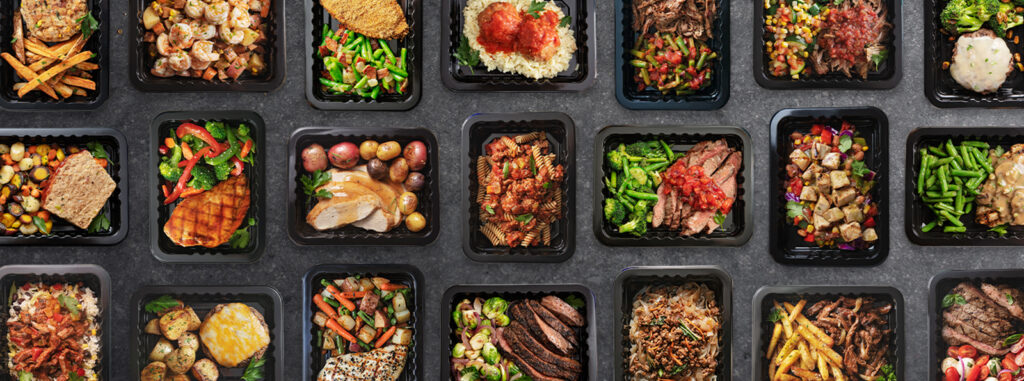The trouble with gluten is the vast amount of data involved, which is challenging in our fast, modern world. It’s never A + B = C: Answering any question relating to gluten usually involves half the alphabet, which means a lot gets overlooked.
Case in point: A study about higher risks of heart disease for those following a gluten-free diet became popular, suggesting that the removal of whole grains is the cause. The fact is, the removal of dietary fiber is the real problem, and that fiber is easily found in legumes, lentils, peas, beans, chia seeds, flaxseed, nuts, seeds, and even fruits like persimmons and apples. Fiber is also found in gluten-free grains such as buckwheat and teff.
The question is, when someone removes gluten from his diet, what does he replace it with? All too often, it’s not organic, real food, but rather it’s highly processed corn-based products. This brings us to another problem: studies regarding high levels of mercury and arsenic found in people who follow gluten-free diets.
Investigating High Mercury Levels
We know that mercury levels in the fish we consume can be dangerously high, but most people don’t know that mercury is also found in high fructose corn syrup (HFCS). If you scan most products on grocery store shelves that are certified gluten-free, you’ll find HFCS often. These are the snacks, cookies, crackers, and other on-the-go foods that replace the traditional — and convenient — sandwich.
Once again, the question is: What are people replacing gluten with? Is it an organic banana, or is it HFCS cookies laced with mercury?
Another mercury-related problem associated with those following gluten-free diets is the prevalence of dental decay in patients with celiac disease. These levels are high enough for dental associations to suggest that when dentists see unexplained high levels of dental decay in patients, they should immediately screen them for celiac disease. More dental decay often means years of dental work and mercury fillings, adding more mercury into patients’ bloodstreams daily.
As someone who was diagnosed with celiac disease at 39, sporting 21 root canals and an entire childhood of unexplained dental decay, I can personally attest to this matter. It took me years to replace all those fillings and then a year of detox to clear the damage from my blood.
I should mention that I consumed no sugar outside of raw fruit and hadn’t had fish or seafood of any kind in more than 15 years before testing high for mercury. Had I been in that study pre-detox, I would have only added to the myth that the cause is a gluten-free diet.
Causes of Elevated Arsenic Levels
The recurring theme in this article is the question, “What are you using to replace gluten?” The two most common answers are corn and rice.
Rice naturally absorbs arsenic from soil and water. Arsenic is magnetized to rice, more so than to any other grains. Remove the wheat and replace it with rice daily, and you’ll have an arsenic problem. However, if you replace the gluten with quinoa, teff, amaranth, or almond flour, you avoid the problem.
Arsenic can also be present in non-organic meats. Many of the medications and feeds given to animals raised at non-organic facilities are high in arsenic — high enough for the U.S. Food and Drug Administration to revoke approval on three out of four feed additives. That doesn’t offer an immediate solution, though, as producers are allowed to deplete their existing stock, which still contains toxins, before replacing it with approved products.
Many producers have at least a year’s worth of stock remaining — and many have more than that. While it would be a financial burden to dispose of this feed and replace it with less toxic options, where does that leave the average consumer? It’s not a simple situation.
Strategies to Avoid Nutrient Loss
It might sound tough to avoid some of the more common gluten replacements listed in this article, but it doesn’t have to be. Plenty of foods are available to replace gluten in your diet while ensuring you don’t lose any valuable nutrients or fall victim to increased risk for heart disease or higher levels of mercury or arsenic. Consider these strategies to improve your gluten-free diet:
1. Choose organic foods.
From meats to vegetables to snacks, make sure the foods you’re eating are organic. Forget the “dirty dozen and clean 15” — it doesn’t make sense to eat “less” poison if you could consume no poison whatsoever. Even products containing low amounts of chemicals are toxic in the long term.
2. Replace gluten with real food.
Avoid highly processed products, even if they might seem convenient. If your food doesn’t expire within a week or two, you should be on the alert. Dehydrated and frozen foods might prove to be exceptions to this rule, but examine the ingredient levels on those products to be sure.
3. Try a variety of new foods.
Corn and rice might be inexpensive, abundant, and easy to rely on, but they’re not always good choices. Take a different route. Explore a variety of foods, such as legumes, seeds, quinoa, teff, or almond flour, that contain many essential nutrients. Equally important are the toxins these foods don’t contain.
4. Plan your meals ahead.
If you’re worried you won’t have time during the week to ensure your gluten-free meals contain real, organic ingredients, consider preparing your meals ahead of time or enrolling in a meal delivery program. Either way, you’ll save time during the week and know that what you’re eating is good for you.
The gluten-free diet doesn’t cause higher risks of heart disease or high levels of arsenic or mercury — the toxic products often used to replace gluten do. Make a conscious effort to avoid those common replacements, and you’ll be on the path to gluten-free success.
Jaqui Karr is a certified gluten practitioner, sports nutritionist, and educator to dietitians. Her approach is 100 percent science-based, often referred to as “Where Science Meets Common Sense,” and includes writing, speaking, and corporate consulting.











